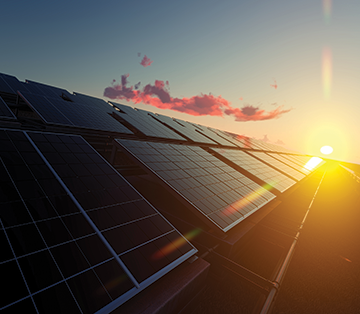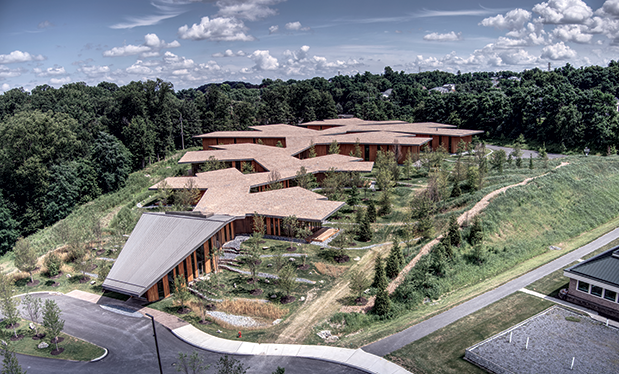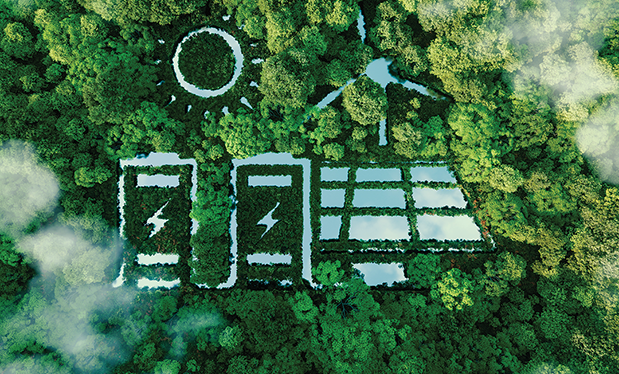
In Aug. 16, 2022, the Inflation Reduction Act was signed into law. Passed on a party-line vote, the legislation was a major win for Democrats who finally enacted large-scale social and climate policies paid for by increasing taxes. The bill represents one of Congress’ largest investments in clean energy, and rooftop solar systems could benefit greatly as a result.
The Inflation Reduction Act includes several solar energy incentives, including a 30% investment tax credit for residential and commercial solar system investments from 2022 until 2032 that steps down in 2033 and 2034. Large-scale solar arrays now are eligible for a production tax credit, and there are investment credits or production credits available for solar components manufacturing facilities based in former coal communities. In addition, direct pay is available for commercial projects for entities such as nonprofit organizations and governments; commercial tax credits also now can be transferred to help facilitate smaller project development.
Residential solar investment tax credit
Homeowners considering investing in solar systems could be intimidated because solar panels or integrated solar shingles can require a substantial investment. However, the investment can pay off in the long run economically and environmentally, and the federal government continues to make solar investments more affordable for homeowners through the Residential Clean Energy Credit outlined in Section 25D of the tax code.
Anyone can qualify for the residential solar investment tax credit for the tax year of installation provided the solar system generates electricity for a home in the U.S. In 2021, the investment tax credit was 26% for solar systems installed between 2020 and 2022. The Inflation Reduction Act increased the tax credit to 30% for 10 years. As a result, the average federal tax credit increased from $4,160 to $4,800 and homeowners have more time for installation.
This is a notable benefit for customers who also will see their investments recouped over several years. Following a solar system installation, homeowners can claim the solar tax credit once but can carry over any unused amount remaining if they could not claim the entirety in a single tax year.
Commercial solar tax credits
The Inflation Reduction Act also extends tax credits for commercial solar system projects. The production tax credit under Section 45 of the tax code is a base rate of 1.5 cents per kilowatt hour (and higher once indexed for inflation) for electricity from a renewable source. In addition, the investment tax credit for commercial solar system installations is set at 30% until Jan. 1, 2025, under Section 48 of the tax code.
Beginning in 2025, these credits are converted to a clean energy production tax credit and a clean electricity investment tax credit until 2032, which is a vital long-term commitment for production and investment for large-scale solar systems projects. Solar facilities also are added to the list of facilities eligible for production tax credits. The solar production tax credit is based on the power produced by a project over 10 years, and the investment tax credit allows investors to claim the one-time credit based on a project’s value.
The credits are subject to a two-tiered rate structure that favors union labor for projects that have maximum outputs of 1 or more megawatts of electricity. For projects to qualify for the maximum tax credit rate, workers must be compensated at or above prevailing wages and a percentage of the work must be performed by “qualified apprentices.”
Small commercial solar systems projects qualify for the full rate automatically. Larger projects not meeting the standards will be eligible for 20% of the full rate. The prevailing wage and apprenticeship requirements apply to employees of contractors and subcontractors alike. Also of note, these requirements are effective for projects that begin construction 60 days after the IRS issues additional guidance about this topic, which may occur as soon as the end of the year.
It is possible to receive bonus investment tax credit if a project meets certain additional criteria. Bonuses are available for projects that meet certain U.S. domestic content requirements or are located in an “energy community” or an “environmental justice” area. An energy community is a brownfield site, which is an area that has or had significant employment related to oil, gas or coal activities. Brownfield sites also include census tracts or any adjoining tract in which a coal mine closed after Dec. 31, 1999, or in which a coal-fired electric power plant was retired after Dec. 31, 2009. An environmental justice area is a low-income community or Native American land (defined in the Energy Policy Act of 1992) or a low-income residential building or qualified low-income economic benefit project.
Manufacturing production tax credit
The act also aims to boost U.S. manufacturing of solar panels and components by creating the advanced manufacturing production tax credit for 10 years, also referred to as the “45X” credit. The bipartisan congressional Joint Committee on Taxation predicts the Inflation Reduction Act will direct more than $30 billion to expand U.S. manufacturing of solar components and other clean energy technologies such as wind and mineral mining.
For the first time, the production tax credit provides incentives for companies that manufacture clean energy equipment in the U.S., including photovoltaic cells, PV wafers, solar-grade polysilicon, solar modules, wind energy components, torque tubes, structural fasteners, electrode active materials, battery cells and battery modules. The amount of the credit for each component is either a set amount per watt, such as 4 cents multiplied by the wattage capacity for PV cells, or a set amount per production quantity, such as $12 per square meter for PV wafers.
The expected increase in U.S. solar manufacturing should particularly help in areas where Chinese production is nearing a monopoly on global manufacturing.
Stay tuned
NRCA remains cautiously optimistic the Inflation Reduction Act will help address solar supply chain challenges affecting the roofing industry, as well as spur more consumers to consider investing in solar systems. NRCA will continue monitoring developments to help ensure all rooftop solar systems contractors and their customers can take advantage of the full scope of tax credits available.
DEBORAH MAZOL is NRCA’s director of federal affairs in Washington, D.C.
This story is part of Rules + Regs. Click here to read additional stories from this section.



